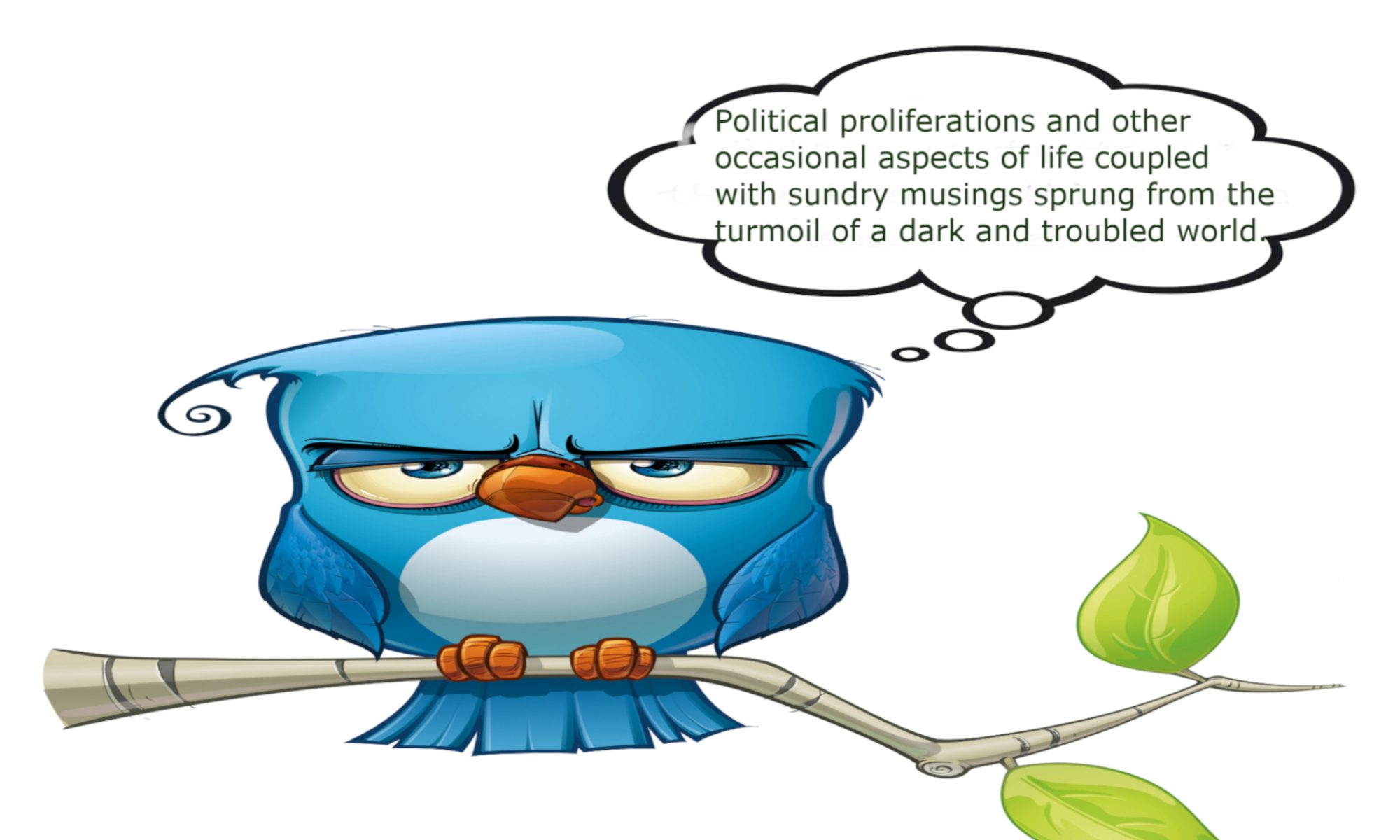A Compilation of Musings and Notes Forever Increasing and With Nowhere Else To Go….
“IN THE BEGINNING WAS THE NAME”
Ask any United States citizen when America began, and those who regularly attended grade school will eagerly respond: “1776”.
Ask them where it started, and their eyes will glaze over.
“Um, it started in America…..didn’t it?”
No, it began in Hungary with a little known lad called Emeric. He was born around 1007 and was the apple of his daddy’s eye. Sadly, Emeric barely made it to the age of twenty-four before impaling his buttocks on the tusks of a wild boar whilst out hunting one day; an unfortunate occurrence that resulted in his hasty demise. Thankfully, daddy had influence, so after a few years they dug him up and Pope Gregory VII made him a saint.
This one divine act prevented the ‘New World’ from being named ‘Columbia’, in honor of Spain’s most famous adventurer – after Don Juan, that is – thus saving the world from geographical confusion, given the South American nation with that name just, so-to-speak, down the road.
(Not to outdone, and determined to pay homage to the courageous explorer wrongly acknowledged as the first to set foot on American soil, the good citizens of the United States set about naming twenty-two towns, and a further forty-five places of interest, after Christopher Columbus).
Meanwhile, Saint Emeric rotted quietly away in his crypt, occasionally dishing out to the local peasantry as he did so, the odd cure for leprosy or gout. This earned him something of a posthumous reputation, devoutly fostered by the Church of Rome who helped spread word of Emeric’s saintly healing powers far and wide – including, to the house of Lisabetta Vespucci, whose descendents went on to make a fortune manufacturing motor scooters.
Lisabetta lived in Florence, Italy, and in 1454, she gave birth to a son. Mrs Vespucci, being a good Catholic woman, thought Emeric was a really nice saint and decided to name her baby after him. Unfortunately, schooling was poor in those days and she wasn’t too adept at spelling, so by the time of the christening, ‘Emeric’ had transmuted to ‘Amerigo’.
When little Amerigo grew up he become an explorer, sailed across the Atlantic Ocean, and discovered that the rather large landmass on the other side was a continent in its own right. On returning to Europe, he rapidly developed malaria and died within three years, without ever knowing the Latin version of his name, ‘Americus’, which he’d adopted, would become converted to the feminine, ‘America’.
Around this point in time, our romantic saga degenerates into a sordid orgy of bloodletting. Once word of the new land spread around the globe there was a stampede to grab as much as possible before others moved in and purloined it first. In the ensuing melee, everyone failed to notice the property was already occupied. Consequently, when the locals turned up and informed the newcomers they were trespassing and would they please leave, it didn’t go down too well.
The red-skinned natives were a peaceable bunch in the main, but they got upset when the settlers kept stealing their food and raping their women. Unable to defend themselves against the superior muskets and cannons of the white settlers they eventually said, “Up yours, Joe,” and took themselves off into the bushes, from whence they’d pounce on unsuspecting immigrants and cut off all their hair. This resulted in the settlers getting very cold in the winter. Wives had to spend all their spare time knitting woolly hats to keep their men warm, which meant they were way too tired for sex, thus causing the men to become more and more frustrated. Eventually, it was decided the natives had to go.
Two methods were utilized to achieve this aim: germ warfare and orthodox firepower. The first was undoubtedly the most efficient, though its success left the settlers scratching their bald heads, as it was entirely accidental. European diseases, to which the natives had no immunity, killed them much more effectively than muskets and cannons ever could. By 1650, eighty percent of the natives had been seen off due to smallpox, typhus, influenza, and other nasties, so the rest decided, “Hell, it’s a big country, let’s go somewhere else.”
Thus, the settlers were left with no-one to fight – so they turned on each other. By this time they’d decided to call themselves ‘colonists’, for no better reason than they lived in ‘colonies’. As some colonies were British, and some were Spanish, and others were French, it made sense for the British to fight the French and the Spanish to fight everyone.
After a while, the Spaniards got fed up with the French and British because they never washed and always smelled bad, so they packed their bags and trudged off to look for Mexico. The French had had enough of the British calling them “gay-boys” just because they wore white pantaloons and lace shirts, so they went to Canada where it was too cold to wash. This made the British very happy as they were left alone, didn’t have to wash at all, and there was no-one to complain about the smell.
Eventually, the British colonies expanded to total thirteen, a number which proved unlucky for the British monarch, GeorgeThree. Britain, or just plain ‘England’ as it was at the time, had been going through a turbulent period prior to George Three getting the job in 1760.
An earlier monarch, Charles One, had proved troublesome to the English congress, or ‘Parliament’ of the day. Parliament was really fed up with the Pope lording it over them, and all the fancy trappings of the Roman Catholic Church, to say nothing of its power, and had embraced the more left-wing, working class religion of Protestantism, that allowed folk to attend church in a casual shirt and old pair of jeans, rather than the Papal insistence on a three-piece suit, white collar, and tie.
Charles One wasn’t happy about all these loose morals, and besides he adhered solemnly to the idea that kings were God’s anointed on earth, so what he said was gospel and to hell with Parliament. Consequently, after a bit of a ruckus, Parliament cut off his head and vowed, “No more bloody kings for us, mate.”
All of which made Charles One pretty mad, but he felt much better when, after his death, the Pope declared him a saint, though unlike Emeric of Hungary, there’s no record he cured anyone of gout or leprosy, or for that matter was useful in any other way. Even so, Parliament relented and allowed his head to be sewn back onto his body, just so he looked presentable when the relatives visited.
The English are a sentimental lot at heart and after a decade or so decided having a king wasn’t such a bad idea after all, so they stuck Charles’s son, Charles Two, on the throne. He lasted twenty-five years but proved as much a Pope-lover as his dad. Over the next thirty years England tried out a further four monarchs, but every one sided with the Pope and caused Parliament no end of trouble.
The good people of England were thoroughly fed up with being forced to wear their ‘Sunday-best’ to church and many of them decided they’d had enough, so emigrated across the ocean to the ‘New World’, where it was rumored no-one wore a suit to church and the oranges were big as footballs. It was a terrible disappointment when they arrived to discover there were no oranges and the Puritans had beaten them to it.
By the time George Three ascended to the throne the English Parliament had joined forces with the Scots and decided it was much easier just to call the whole place, ‘Britain’. The Scots hated the Pope, which was a real bonus because by now Parliament was powerful enough to choose who would be king. They decided on George Three, because he didn’t really care much for the Pope either.
One thing that did make George Three really mad, however, was all those unwashed Brits lounging around in the ‘New World’. The king loved wars, and was delighted to declare Spain and France enemies of Britain. His Royal Navy would regularly beat-up the French and Spanish fleets in the English Channel, but, out of spite, they’d sail to the American coast and lay siege to the British settlers. This upset George Three as it was costing a fortune in soldiers and ships to defend the colonies. He decided they’d jolly well have to pay for it themselves, through taxes.
Now George was quite a nice man most of the time, but rather given to personal vanity. So when a traveling salesman tried to flog him a new line in hair balm, the king couldn’t resist. He bought twenty barrels of the stuff and the salesman scampered off with a fat profit. Unfortunately, unbeknown to George, the main ingredient of the balm was arsenic. It wasn’t long before the poison penetrated his skull and he began to go really mad.
The king’s courtiers discovered he was mad when, one day, they saw him shaking hands with a tree, believing it was the King of Prussia. It was during one of these mad periods in George Three’s reign that he decreed the American colonists would pay taxes on every sheet of paper they used. This was not a good idea and the colonists grew very upset. As most of the paper was used to make newsprint, the owners used their newspapers to berate George Three and stir up the colonists, who by now were a considerable number.
In retaliation, the colonists decided they would boycott tea-drinking. A group of troublemakers and ringleaders began stirring up trouble, preventing British ships laden with tea from unloading their cargo at Boston, a port on the east coast of America. Some of the colonists boarded the ships at night and threw all the tea into the sea. In all, forty-five tons of tea ended up in the icy waters of Boston Harbor. It marked the moment in history when Americans began preferring their tea with iced water, and the traditional hot drink became coffee.
While all this seems most silly today, it was taken very seriously at the time. George Three was most upset. He sent lots of British troops to ensure the colonists were adequately chastised for their bad behavior, but the unruly ‘Americans’ blew raspberries at the British and refused to take their punishment like men. The result was the American Revolution. At least, that’s what those loyal to King George called it. To the population inhabiting the thirteen New World colonies, it eventually became known as the American War of Independence.
If the arsenic seeping through his scalp turned George Three mad, the American Revolution made him even more furious, especially when in 1776, the date burned indelibly into every American schoolkid’s brain, the colonists set up their own Parliament – or as they called it, ‘Congress’ – and drew up a Declaration of Independence. George Three paced violently up and down his palace hallways, throwing anything he could lay his hands on at anyone who dared to confront him.
“How dare they?” he bawled, to no-one in particular, “They haven’t even WON yet!”
This was true. The Declaration of Independence may have been signed and sealed in 1776, but it was another seven years before the fighting finally stopped, Britain finally gave up, and sued for peace. During that time the Americans allied themselves with George Three’s bitterest enemies, the French and the Spanish – though the Spanish only agreed on condition the British washed themselves at least once a week.
Finally, George Three and Britain decided the new ‘United States’ could have its way and all parties shook hands and determined to be friends. All, that is, apart from the French, who felt very left out so began their own revolution, insisting it would be even more bloody than the American one. It was, and from it arose a Frenchman by the name of Napoleon Bonaparte, who rapidly became another thorn in King George’s side, one that would take his mind off his lost American colonies.
This, then, was how the great United States of America was founded by a bunch of malcontent ne’er-do-wells from Britain who hated wearing suits. They slaughtered the indigenous population, were too mean to pay taxes to their king, and stole the land from the English throne by joining forces with their homeland’s sworn enemies and driving their own kinsmen back into the Atlantic Ocean.
At least, that’s the British version of the story.
“GEORGE WASHINGTON AND THE FOUNDING FATHERS”
Right from its inception, America tried to do things bigger and better than anybody else. When it came to parents, mothers didn’t get a look-in, but the fledgling democracy went totally overboard about its fathers. Most of us settle for one, or possibly two. America had fifty-six. Even that number is open to argument, given that it’s based on signatories of the Declaration of Independence, and many authorities include others who added their names to the US Constitution or just partook of the War of Independence.
Just as any one of us might have problems remembering the names of fifty-six dads, so it was with Americans. Over the years, most of the founding fathers of America slid quietly and ignominiously into oblivion. Nowadays, even the brightest US schoolkid would be hard pressed to remember more than a dozen.
These colonial officials came from all over the thirteen colonies to sign the Declaration of Independence. They argued and bickered interminably, but eventual agreement was reached on a document that began nobly and with great vision, but rapidly degenerated into a vitriolic attack on the British King, George III, and what an absolute jolly rotter he was. Still, it made them all feel better and they went home puffed full of their own importance at how they’d shown the folks back in England how no-one was going to push them around.
Almost two hundred and fifty years later, the American Declaration of Independence has been reduced in the minds of most Americans from ninety-three lines, to just two –
We hold these truths to be self-evident, that all men are created equal, that they are endowed by their Creator with certain unalienable Rights, that among these are Life, Liberty and the pursuit of Happiness……”
– which is unfortunate because, had they paid more attention to what came shortly after, the world today might be a much better place:
That whenever any Form of Government becomes destructive of these ends, it is the Right of the People to alter or to abolish it…..”
The insulting of King George III written into the Declaration of Independence didn’t amuse that monarch, and so the War of American Independence dragged on for a further seven years. Finally, George III said he’d had enough and preferred to fight the French, so he washed his hands of America and turned his armies on Napoleon Bonaparte.
This threw the founding fathers into a quandary. It took another six years of bickering about how they were going to run the country before someone had the bright idea of getting together the following spring in Philadelphia, one of the more upmarket colonies, for coffee and buns and maybe a discussion on how to form a government. While some objected to the distance, others thought it was a good idea as they could do some shopping, and besides, “Philadelphia was lovely in May.”
They called themselves the “Philadelphia Convention” and enjoyed it so much decided to stay on a full two months. After much socializing, shopping, and a little debate, most were able to agree on a framework for government, though one major sticking point was the vexed question of slavery. The Chairman appointed was one George Washington from Virginia, who’d made a name for himself in the war against the British and was highly thought of. He owned a huge plantation with over three hundred slaves and wasn’t too keen to part with them, particularly as he’d recently moved out of tobacco and into wheat and cannabis production, along with a bit of brandy distilling on the side. It was all very labor intensive.
While many from the southern colonies agreed with George, there were others who thought slavery was jolly bad form and wanted it banned right away. In the end, all agreed it was near the bottom of the agenda and there were much more important issues to consider, so it was decided to leave the question of slavery for another twenty years, before considering it again.
After a while, George Washington changed his opinions and decided to release his slaves, but found they didn’t want to leave. This is hardly surprising as they had free board and lodging, best quality wheat bread, and a regular supply of brandy and pot.
George Washington became the very first president of the United States in 1789, and later generations of Americans made up so many stories about him he became a legend. One famous story relates how, as a small boy, he chopped down his father’s cherry tree and when quizzed about it, said, “I cannot tell a lie. It was me with my little axe.”
This, like many other George Washington fables, has no basis in fact. It is true that he suffered from very bad teeth. He had false ones made, from bits of horse and donkey teeth (not wood, as is generally believed), and was addicted to laudanum, which he probably took initially to dull the toothache. Despite these handicaps, he managed to make a respectably good president, and as such was undoubtedly America’s best.
Though that, as history was later to determine, proved hardly a monumental achievement.
© Copyright 2009 R.J Adams




